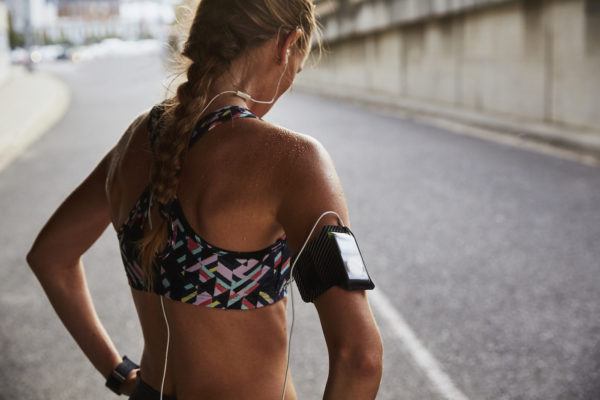How to get the most out of your exercise time, according to science
A simple guide to high-intensity interval training, or HIIT, the fitness trend du jour.
By Julia Belluz@juliaoftorontojulia.belluz@voxmedia.com Updated Jan 13, 2019, 9:13am EST
:format(webp)/cdn.vox-cdn.com/uploads/chorus_image/image/62822164/shutterstock_1007038000.0.jpg)
The single most well-established benefit of interval training has to do with heart health. Shutterstock
Modern life has a way of making us feel time-crunched and under pressure to find the most efficient ways of using the precious hours when we’re not working or sleeping. The trendy fitness regimen called high-intensity interval training, or HIIT, is the embodiment of this feeling.
HIIT promises the best workout in the least amount of time. Runners have used interval training for more than 100 years, alternating between sprints and jogging to improve their endurance. But HIIT didn’t really go mainstream until about a decade ago, when exercise physiologists started to come out with study after study demonstrating that intervals could deliver the biggest health improvement for your exercise time. In 2013, the seven-minute workout, popularized by the New York Times, appeared on the scene, and by 2016, the one-minute workout.
Recently, fitness professionals voted HIIT the third top fitness trend for 2019 in a survey by the American College of Sports Medicine. And interval-based workouts are now popping up seemingly everywhere: at chains like Shred415 and Orangetheory (the fastest-growing franchise in the US), in group classes at YMCAs, on apps and YouTube, even in the routines outlined in Oprah’s O magazine. Often they promise to burn fat and “metabolically charge the body,” as Orangetheory puts it, in a short time period.
But there are some important nuances scientists have learned about HIIT that have gotten lost in the hype. The proven benefits of these workouts relate to a very particular type of interval training, and they’ve got nothing to do with weight loss. Here are six basic questions about HIIT, answered.
1) First things first: what is HIIT?
HIIT workouts generally combine short bursts of intense exercise with periods of rest or lower-intensity exercise. At fitness studios and online, these workouts often mix aerobic and resistance training.
To be clear, most of the interval workouts researchers have studied focus solely on aerobic exercise. Which means the scientific understanding of interval training is based on a more specific routine than what’s appearing in most gyms, videos, and magazines. And the researchers’ definition matters because when we’re talking about the evidence of benefits, we need to be specific about the kinds of workouts that science was based on.
When researchers talk about HIIT, they’re referring to workouts that alternate hard-charging intervals, during which a person’s heart rate reaches at least 80 percent of its maximum capacity usually for one to five minutes, with periods of rest or less intense exercise. (It’s not easy to know that you’re working at 80 percent, but a Fitbit or heart rate monitor can help.)
“There’s a strict definition of HIIT in terms of heart rate,” explained Todd Astorino, a professor in the department of kinesiology at California State University San Marcos.
There are also SIT studies, which include all-out bouts of intensity (working at 100 percent of your heart’s capacity). The SIT research, also focused on intervals, reveals similar benefits, so I’ll draw on it too.
2) What does a HIIT routine look like?
What differentiates HIIT (or SIT) from the steady-state, continuous types of exercise — jogging at an even pace or walking, for example — is the intervals, those periods of heart-pounding intensity. If you want to try it, you can simply take a HIIT class, or run or even walk in a way that involves higher-speed and higher-incline bursts.
If you want a routine that’s been lab-tested, there’s the 4-by-4 from Norway. It involves a warmup, followed by four four-minute intervals (again, where your heart rate reaches past 80 percent of its maximum capacity), each interspersed with a three-minute recovery period, and finished off with a cool-down.
So, for example, you’d jog for 10 minutes to warm up, then do four four-minute intervals of faster running, with three three-minute intervals of moderate jogging or brisk walking in between, and a five-minute cool down at the end. And you can substitute jogging with other aerobic exercises, such as biking or swimming. The whole routine should take 40 minutes.
A shorter, and also heavily studied, example of an interval routine is the 10-by-1, which involves 10 one-minute bursts of exercise each followed by one minute of recovery.
Again, these routines look pretty different from what’s on offer at chains like Orangetheory, CrossFit, or even the seven-minute workout. Even though they’re often referred to as HIIT, they combine cardiovascular exercise with strength training.
3) What are the benefits of interval training?
The single most well-established benefit of interval training has to do with heart health. Intervals can boost cardio-respiratory health with a smaller time investment compared to continuous forms of exercise. So we’re not talking about superior fat-burning capacity (more on that later) or bigger muscles. We’re talking about improved VO2 max, a measure of endurance that calculates the maximum volume of oxygen the body can use.
“Scientists have found that [VO2 max] is one of the best predictors of overall health,” according to the recent interval training book The One Minute Workout, co-authored by Martin Gibala, one of the world’s leading interval training experts, who’s based at McMaster University in Canada. “The more aerobically fit you are, the better your heart can pump blood, the longer it takes you to get out of breath, and the ****her and faster you’re able to bike or run or swim.” And that, in turn, can help prevent heart disease.
Consider this 2016 SIT study, in which Gibala and his co-authors followed two groups of participants for 12 weeks: One group worked out for 10 minutes (including several intervals that added up to one minute), and the other for 50 minutes (at a continuous pace).
The most remarkable finding in the study was that the two groups of exercisers saw the same improvement in their oxygen uptake, despite their varying time commitments.
In a 2014 study, Gibala and his fellow researchers got a group of overweight and obese sedentary adults to do three workouts per week, for a total of 30 minutes of exercise. Each workout included three 20-second intervals of fast pedaling on an exercise bike. Even in that short period of time, the study participants saw improvements in their VO2 max.
Reviews of the research have come to similar conclusions: Interval routines lead to greater gains in VO2 max compared with other forms of training in a shorter period of time.
“HIIT is a time-efficient strategy to get the benefits typically associated with longer bouts of traditional cardio,” Gibala told Vox.
Of course, the more you put into a HIIT workout, the more heart health benefits you get out. In this 2013 meta-analysis, researchers evaluated the effects of high-intensity interval training studies, separating out nine studies that showed the largest improvements in VO2 max and nine studies that reported the smallest gains.
The findings were telling: Less intense training programs with shorter intervals carried the least health benefits, while interval training studies reporting the greatest increases typically used longer (three- to five-minute) intervals.
For this reason, athletes have long used the interval technique to up their game, Mayo Clinic exercise researcher Michael Joyner told Vox in 2016. “There’s observational data in athletes going back almost 100 years showing the benefits of a few bouts of really high-intensity exercise in people.” He added: “If you want to get people to their biological maximum, they need to be doing four to five times of three- to five-minute intervals.”




 Reply With Quote
Reply With Quote
:format(webp)/cdn.vox-cdn.com/uploads/chorus_image/image/62822164/shutterstock_1007038000.0.jpg)
:format(webp):no_upscale()/cdn.vox-cdn.com/uploads/chorus_asset/file/13681242/GettyImages_1044778064.jpg)

:format(webp)/cdn.vox-cdn.com/uploads/chorus_image/image/63047218/Photo_Aug_31__1_53_26_PM.0.jpg)
:format(webp):no_upscale()/cdn.vox-cdn.com/uploads/chorus_asset/file/13756411/Photo_Aug_31__2_35_06_PM.jpg)
:format(webp):no_upscale()/cdn.vox-cdn.com/uploads/chorus_asset/file/13756441/Photo_Aug_31__6_29_47_PM.jpg)




